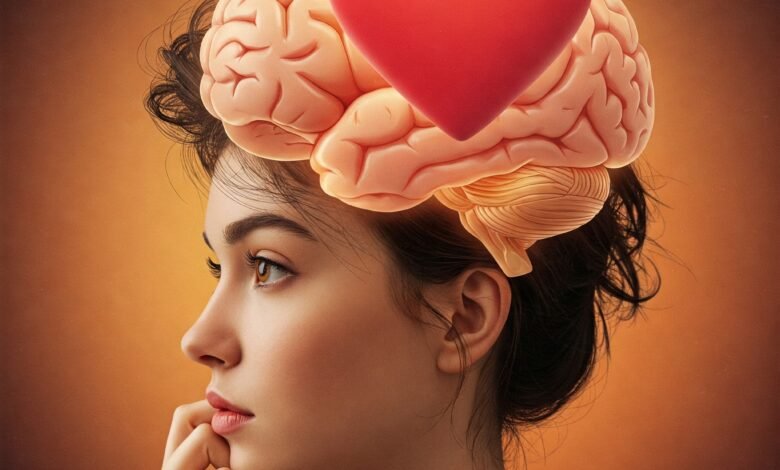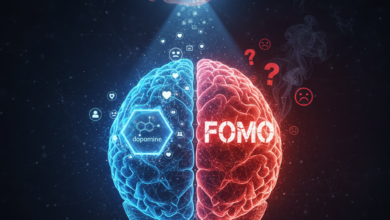The Science of Love: What Happens to Your Brain When You Fall in Love

The Neurochemistry of Love
Falling in love triggers a complex interplay of neurochemicals in the brain, which significantly influences our emotional experiences and physiological responses. At the forefront of this neurochemical cocktail is dopamine, a neurotransmitter closely associated with pleasure and reward. This chemical is released in higher quantities during the early stages of romantic attachment, creating feelings of joy and excitement. The surge of dopamine contributes to the euphoric sensations typically associated with falling in love, leading individuals to feel an intense, almost exhilarating sense of happiness when with their partner.
In addition to dopamine, oxytocin plays a crucial role in the formation of emotional bonds between partners. Often referred to as the “love hormone,” oxytocin is released during intimate moments such as hugging, kissing, and sexual activity. This neuropeptide fosters trust and attachment, facilitating a deeper connection and security within the relationship. The release of oxytocin can evoke tender feelings, promoting a sense of closeness that further strengthens the romantic bond.
Along with dopamine and oxytocin, norepinephrine also contributes to the emotional landscape of falling in love. When individuals are in love, norepinephrine levels increase, leading to heightened arousal and excitement. This state often manifests in physical sensations such as increased heart rate, perspiration, and flushed skin, which are common indicators of romantic attraction. The combination of these neurochemicals not only intensifies feelings of love but also heightens emotional responses, often resulting in an overwhelming desire to be near the loved one.
Understanding these neurobiological mechanisms helps clarify how the complex emotions associated with love are rooted in our brain chemistry. The interplay of dopamine, oxytocin, and norepinephrine not only explains the physiological changes we experience but also sheds light on the profound emotional connections formed during the early stages of romantic love.
Changes in Brain Activity
Falling in love is not merely an emotional experience; it triggers profound changes in brain activity. Various neuroimaging studies have shed light on the specific areas of the brain that become more active when an individual is in love. Notably, regions such as the ventral tegmental area (VTA) and the caudate nucleus show heightened activity during the initial stages of romantic attachment. These areas are intimately involved in reward processing, motivation, and the formation of emotional bonds.
The VTA is a crucial part of the brain’s reward circuitry, meaning its activation may explain the euphoric feelings often accompanying new love. When individuals experience mutual affection or physical closeness, dopamine—the “feel-good” neurotransmitter—floods the brain. This influx enhances sensations of pleasure and reinforces behaviors that foster connection and intimacy. The caudate nucleus also plays a pivotal role in processing rewards and is believed to assist in the larger context of committed relationships, integrating both emotional and cognitive aspects of romantic attachment.
Furthermore, studies from neuroscience suggest that love activates centers linked to pleasure and desire, essentially creating a feedback loop that strengthens romantic connections. The intertwining of emotions and rewards in these brain regions cultivates a sense of exhilaration, making falling in love an experience that can be both intoxicating and transformative. Essentially, when an individual falls in love, they are not just experiencing a psychological phenomenon but undergoing significant neurobiological changes that influence their thoughts, feelings, and behaviors.
Understanding these changes illuminates how love impacts human relationships and individual well-being. As research in this area evolves, it continues to unveil the intricate interplay between brain activity and romantic love.
The Psychological Effects of Falling in Love
Falling in love is a profound and transformative experience that has significant psychological ramifications. One of the most notable effects of love is its ability to reshape an individual’s personal identity. As people enter romantic relationships, they often start to identify more strongly with their partner and the shared experiences that develop between them. This merging of identities can lead to positive changes in self-esteem, as feelings of acceptance and belonging enhance an individual’s sense of worth.
Moreover, the cognitive processes associated with love can alter thought patterns. Individuals in love often experience an idealization of their partners, accompanied by a heightened focus on the positives in their relationships. This optimistic mindset promotes well-being and satisfaction. However, it also introduces complexities, such as anxiety over potential loss. The fear of losing a romantic connection can lead to increased stress, resulting in fluctuations in mental health. This duality—experiencing joy and anxiety—underscores the intricate psychological landscape of love.
Additionally, love influences social behavior significantly. Those who are in love often display increased sociability and a desire to nurture relationships both within and outside the romantic partnership. This can enhance social networks, contributing to emotional support systems that benefit mental health. The supportive nature of romantic love may also encourage individuals to adopt healthier lifestyles, further promoting psychological well-being.
Theories surrounding attachment styles further illuminate how love impacts relationships. Secure attachment fosters trust and open communication, enhancing relationship satisfaction. In contrast, anxious or avoidant attachment styles can lead to conflicts and insecurity. Understanding these behaviors can help individuals navigate personal relationships more effectively and recognize the importance of emotional bonding in achieving a healthy love life.
Long-term Effects of Love on the Brain
The experience of love has profound and enduring effects on the brain that extend well beyond the initial infatuation period often characterized by the so-called “honeymoon phase.” As individuals engage in meaningful romantic relationships, research has demonstrated that their brain structures and functions can exhibit significant changes. Neuroimaging studies indicate that long-term love can lead to alterations in regions associated with emotional regulation, social cognition, and memory. For instance, areas like the ventral tegmental area, integral to reward and pleasure, remain activated in long-term partnerships, suggesting that love continues to provide a sense of euphoria and happiness well into the relationship.
Furthermore, love fosters a lasting attachment that not only stabilizes emotional and social bonds but also enhances resilience over time. Romantic relationships can act as protective factors against stress and anxiety, leading to improved mental health outcomes. When individuals feel supported and understood by their partners, they are often better equipped to face life’s challenges. This sense of security can contribute positively to cognitive health as individuals age, influencing memory retention and inhibiting cognitive decline. Love promotes the release of oxytocin, often called the “bonding hormone,” which plays a crucial role in social interactions and emotional attachment, significantly enhancing the couple’s feelings of safety and nurturing.
Moreover, having a loving partner can drive personal growth, encouraging one to pursue new interests and engage more fully in social activities. As people nurture their relationships, they gain access to a broader support network that contributes to their well-being. These benefits underscore love’s transformative power throughout life, establishing not only strong interpersonal connections but also fostering an overall enriched quality of life. The brain, thus, becomes an evolving canvas shaped by the enduring effects of love, demonstrating its importance in overall mental and emotional health across the lifespan.






















